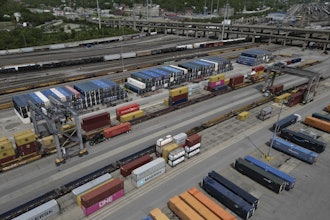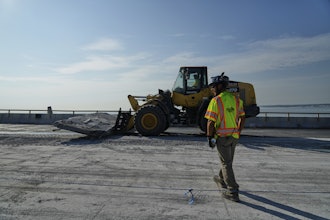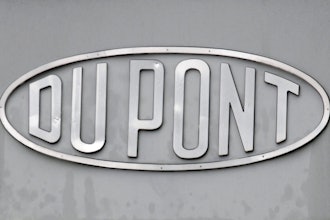The increasingly sophisticated control systems of today, mixed with the inherently poor power environment of an industrial facility and aging power generation and distribution facilities—both inside and outside of the plant—can produce a wide variety of power and electrical noise problems.
Understanding these problems, along with some of their causes and solutions, can help ensure the design of mission critical electronic systems that are both reliable and cost-effective.
Mission Critical Elements
The first task in protecting mission critical elements is to identify them. While each system is unique, the mission critical components are usually easily recognized. They include items that, if they fail, will cause customer displeasure, increased labor, or increased material cost.
Typically, programmable logic controllers (PLCs), industrial computers, and electronic motor speed controls serving in the control loop of a manufacturing process are the first components that are put on the “mission critical” list. But, this list is far from complete.
Sensors, data communication equipment, actuators, and even production planning systems must be included to achieve a high level of customer satisfaction and minimize costs due to downtime. As each component is evaluated for inclusion on the critical component list, remember it’s “mission critical” if its downtime causes lost profits.
Levels Of Protection
Once the list of mission critical components and systems is identified, the next step is to determine the necessary level of protection. When making this decision, it is valuable to look at achieving three distinct levels of protection.
The first level of protection provides a defense against the instantaneous destruction of critical equipment, and the second level provides additional protection against long term degradation of equipment, a condition often seen in semiconductor devices. The third, and most important level for most industrial systems, adds defense against disruption—those unexplained soft failures, system lock-ups, and resets for which no specific cause can be identified.
As more devices containing volatile memory find their way onto the production floor, guarding against such disruptive events becomes even more critical to ensure that these costly interruptions do not occur.
Total Protection Solution
If satisfied customers and controlled costs are of primary importance, there is little question that systems must be protected to the third, and highest level. To accomplish this, it is critical to use a Total Protection Solution for your mission critical systems. This approach requires that each and every input and output line, whether power or data, be examined and appropriately protected against likely hazards. Achievement of this level of protection usually requires the use of industrial grade components, along with a combination of devices such as surge protectors, power conditioners, power conditioned uninterruptible power supplies (UPSs), as well as appropriate grounding techniques.
Power Line Issues
Power line problems can cause the destruction, degradation, or disruption of mission critical equipment either “inside” or “outside” the industrial facility. Outside problems include inclement weather that produces lightning induced transients or power line outages due to high winds or ice. Power problems may also come from routine utility operations such as capacitor switching to effect power factor correction, or from the clearing of line faults. While outside events are the most obvious and spectacular, it is estimated that in industrial facilities, up to 80 percent of power-related problems originate on the customer’s side of the meter, dubbed “inside events.”
Inside events are caused by a wide variety of factors including stopping and starting of motors, welding equipment, electronic motor speed controls, poor grounding, and some of the same problems facing the utility company—fault clearing, and capacitor switching. The result of these events show themselves in many ways including voltage interruptions, sags, and the less obvious, but more disruptive, voltage transients.
Among the most noticeable and measured power quality problems are power interruption and voltage sags. Solutions to combat power interruptions include alternate feeds to the facility, local backup generating capability, and UPSs on selected equipment. Voltage sags solutions might include layout of power distribution to minimize the number of sags induced on critical equipment from internal causes such as starting motors and fault clearing.
Typically a more practical approach for protecting controllers is the application of a voltage control device in the power path supplying the control system. Because these local devices can compensate for sags generated both inside and outside of the facility, using them is more reliable and less expensive than attempting a plant-wide solution.
A New Environment
Today, however, control systems have changed. Loads are more typically Switch Mode Power Supplies (SMPS), and sags (particularly with deregulation) are likely to become more severe. In addition, control systems are often no longer based on proprietary software that “crashes” well, but on commercially available operating systems that need to be properly shut down in order to start up smoothly. Power system load requirements also change more often as control schemes are frequently updated with the latest technology in order to gain additional performance from existing tooling and equipment.
While changes have been made in many CVTs (constant voltage transformers) to adapt to this new technology, the best solution is one that was specifically designed to support SMPS and has more energy to ride through severe sags than a typical CVT. Such a device is a USP with integral isolation transformer that provides highly robust regulation, isolation, and backup. If an isolation transformer already exists in the power path near the load, a UPS with double conversion topology can also serve quite effectively.
Additional Considerations
In addition to installing an appropriate power conditioning device, proper care must be taken in system layout and wiring. In particular, it is critical that the wiring to the power conditioner not be run with the power from the output of the power conditioner. Running these wires in the same conduit or wiring tray will significantly reduce the benefits provided by installing the power conditioner.
It is also important that, whenever possible, all critical devices, including sensors, be powered from the same power conditioner as the controller and that sensor and peripheral equipment grounds be connected at a common point. Finally, data communication cables should be run in conduit or wiring trays that do not contain power, or at a minimum, do not contain unconditioned power.
The Comprehensive Approach
In order to provide the highest level of confidence in the reliability of a mission critical industrial system two steps are required. First, robust equipment designed to be used in an industrial environment must be selected. While this article discusses techniques to minimize the effect of electrical anomalies on the system, items such as working temperature range, and mechanical ruggedness are also important to ensure long term system reliability. Once the proper equipment is selected, installing it with the proper Total Protection Solution on power and communication ports becomes of paramount importance to provide a system that is as failure-free as possible.
When installing equipment with the goal of achieving total protection, it is important to protect each and every power and communication port into the system and provide a grounding scheme that is in accordance with the NEC and the manufacturers’ guidelines. In a well-protected system, each power port should be protected with a low impedance transformer-based power conditioner to control both common and normal mode noise. On some power ports a low impedance transformer-based power conditioner with batteries (UPS) may be the proper choice to provide protection against extended sags and outages when sensitive controllers need to be shut down in an orderly fashion.
In addition, each communication line should have a CLP installed that has the appropriate voltage breakdown level and controlled insertion loss for the type of communication port being protected.
Finally, remember that once a system is properly installed and protected, vigilance is required to maintain the level of integrity that was originally intended. One single “on the fly” addition or change can leave a system with an unprotected path, and subject to the disruptive effects of power and communication line anomalies.


















